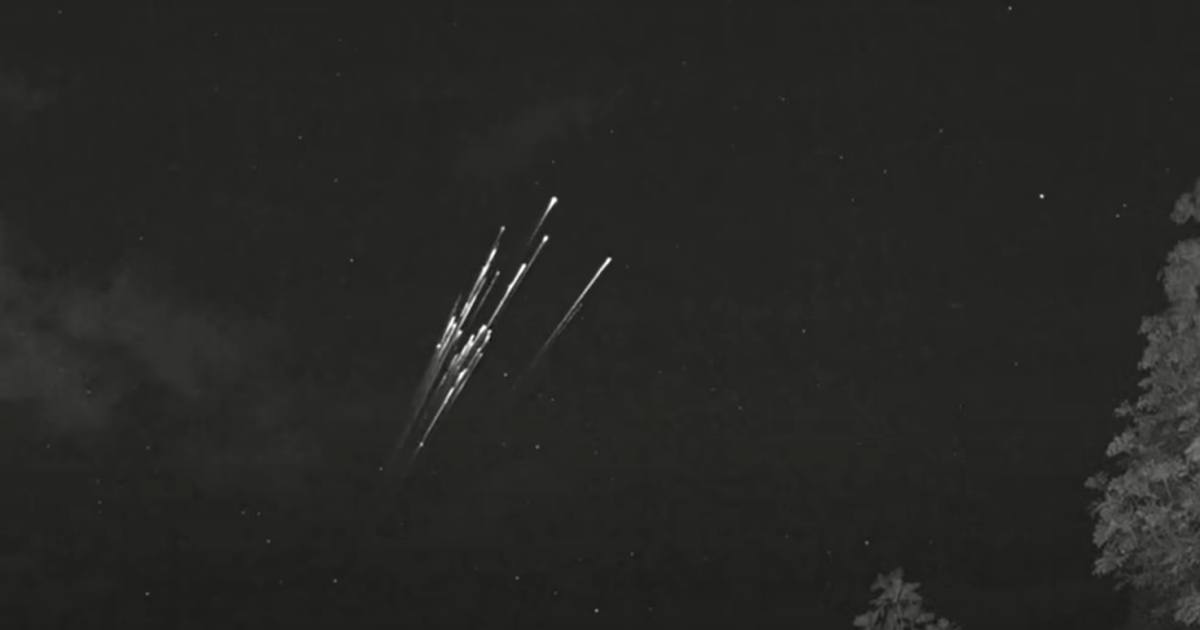
Image: Sociedad de Astronomía del Caribe
Our Sun recently showed SpaceX boss Elon Musk who’s in charge, with a burst of solar energy taking out dozens of Starlink satellites.
Among SpaceX’s various activities is the creation of a satellite network, or “constellation”, to deliver broadband services across the world. Starlink satellites weigh approximately 260 kilograms each and are powered by solar panels. Around 2,000 have been launched to date – and the company intends deploying a couple thousand more.
The satellites operate at an altitude of 550 kilometres, but are first deployed at 210 kilometres where they undergo testing before being sent on their way. Dud satellites are quickly “deorbited” by atmospheric drag.
Stormy Solar Weather Forecast Ignored?
On Thursday, February 3, SpaceX’s Falcon 9 launched 49 Starlink satellites to low Earth orbit from Kennedy Space Center in Florida. Apparently this wasn’t the best day to do so.
SQ’s Ronald commented:
“..they were warned about the danger and launched anyway. Sounds stupid, but maybe they crunched the numbers and it was a sensible choice given the information they had. Or maybe they were idiots. Both possibilities fit the information I have.”
The danger was a geomagnetic storm, which is a disturbance in Earth’s magnetosphere created by charged particles originating from the upper atmosphere of Sun, known as “solar wind”. Like winds here on Earth, they vary in intensity and in recent times the Sun has been more active in generating solar storms.
On Friday, January 4, disaster struck SpaceX when forecast storms hit.
“These storms cause the atmosphere to warm and atmospheric density at our low deployment altitudes to increase,” said SpaceX in an update last week.
The company said drag was up to 50 percent greater than during previous launches
While the team put the satellites into safe-mode to have them fly edge-on to minimise drag, the craft were unable to exit this mode and 40 reportedly burned up in the atmosphere. SpaceX says given their design, no orbital debris was created and no satellite bits would have wound up on the ground (or embedded in anyone’s head).
In an attempt to make lemonade from lemons, SpaceX stated:
“This unique situation demonstrates the great lengths the Starlink team has gone to ensure the system is on the leading edge of on-orbit debris mitigation.”
… but perhaps a few choice words were uttered at SpaceX HQ when they realised they may also be on the leading edge of Elon’s wrath and wind up like Neuralink monkeys (unless he was behind pushing ahead with the mission).
So, Why Take The Risk?
Starlink satellites are an expensive bit of kit, but so is rescheduling launches, which would have come into play in weighing up a decision to proceed or abort.
Ronald pointed out there may have also been some added incentive to proceed. For example, Tonga’s fibre optic cable is out of action and being able to provide good satellite broadband service would have been a huge public relations success for SpaceX and Elon Musk.
This theory isn’t based on anything Ronald had heard or read; it just sprang to mind.
The following video is claimed to be footage of the Starlink satellites burning up over Puerto Rico. Things get pretty spectacular around the 30 second mark.

 RSS - Posts
RSS - Posts



I asked about the implications of what happens to solar panels when they lose efficiency after 10 to 15 years. Has there been any comment ?.
Starlink satellites have a life span of around 5 years. On earth, these days any decent quality solar panel has a performance warranty that promises they’ll maintain at least 80% of their original capacity after 25 years. Most promise more than that now. If you don’t mind paying extra, you can get SunPower Maxeon panels that guarantees over 88% of original output for 40 years.
I put my panels in about 20 odd years ago and they are down to about 50% of original capacity. However irrespective of 20 or 50 years there will be a time in the future when it will be necessary to deal with used panels and there will be a lot of them . Will it be necessary to replace them with new panels , or will it be possible to treat the panels in situ to achieve the original capacity or close to it.
Sorry to hear how poorly your panels have held up over time. Twenty years ago there were 25 year performance warranties offered with some panels, so it’s possible you could make a warranty claim.
There are some treatments that can reverse some limited types of panel damage but — outside of perhaps some special cases — it’s not economic to use them, as they only repair limited types of panel deterioration. It makes much more economic sense to replace older panels. Unless your are receiving a high feed-in tariff with your current solar system, your best option will be to replace it with a brand new and larger solar system.